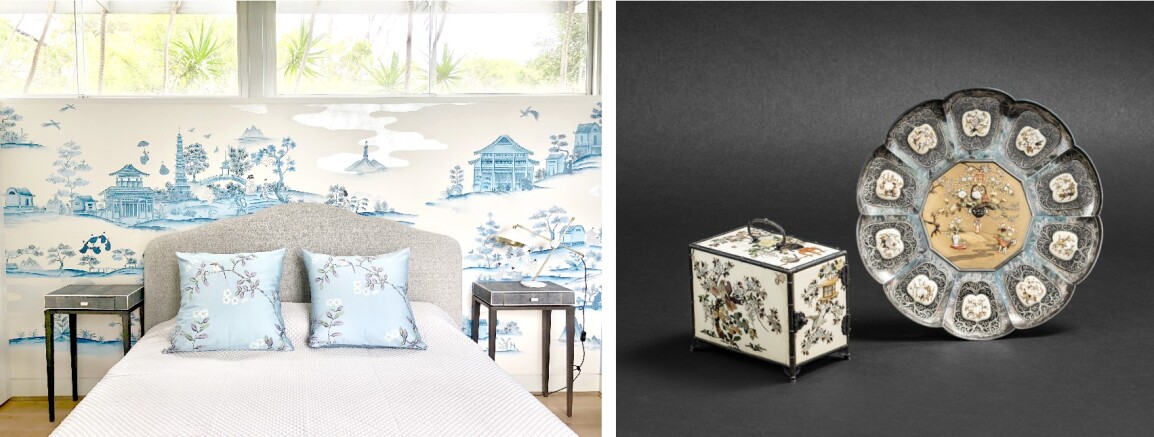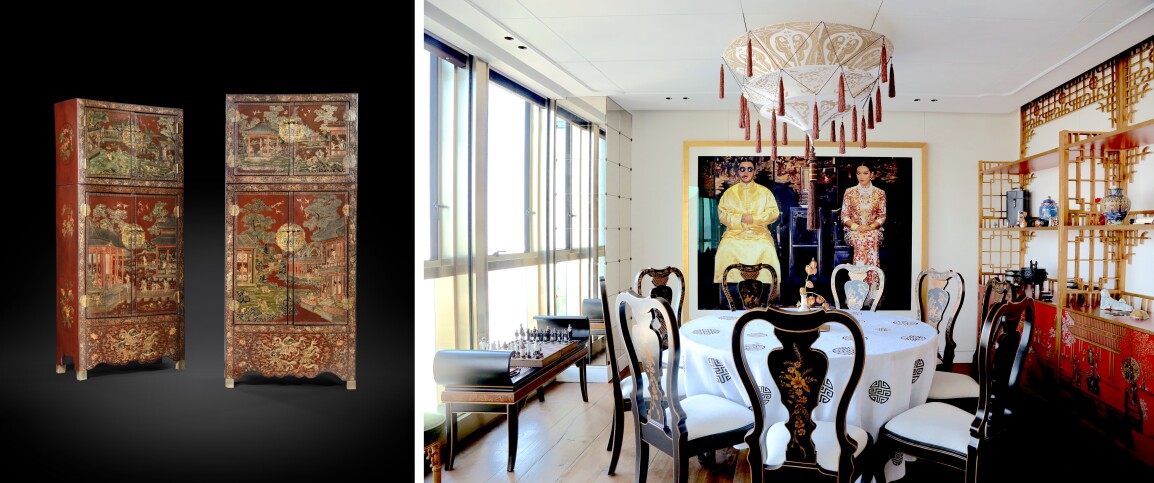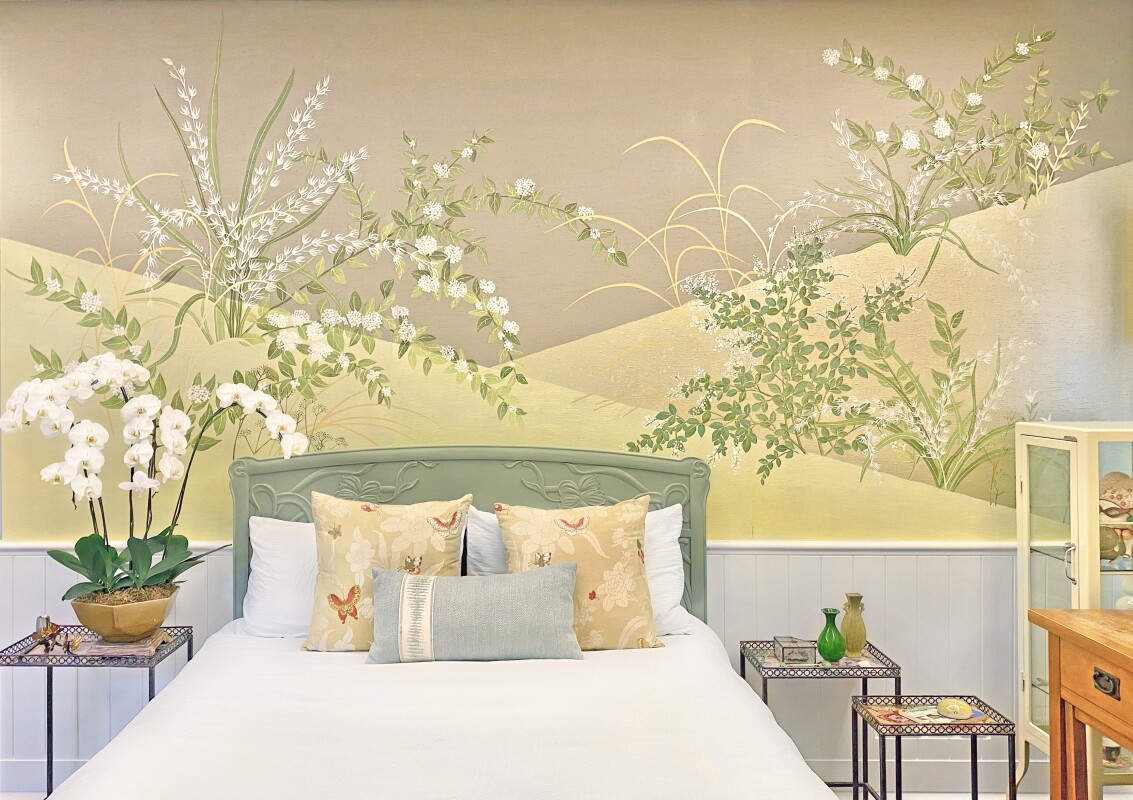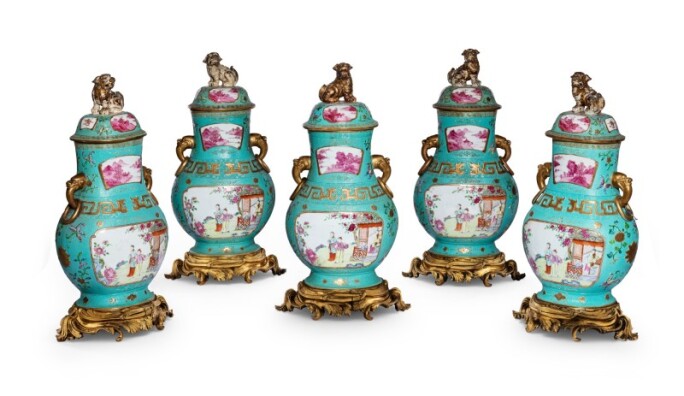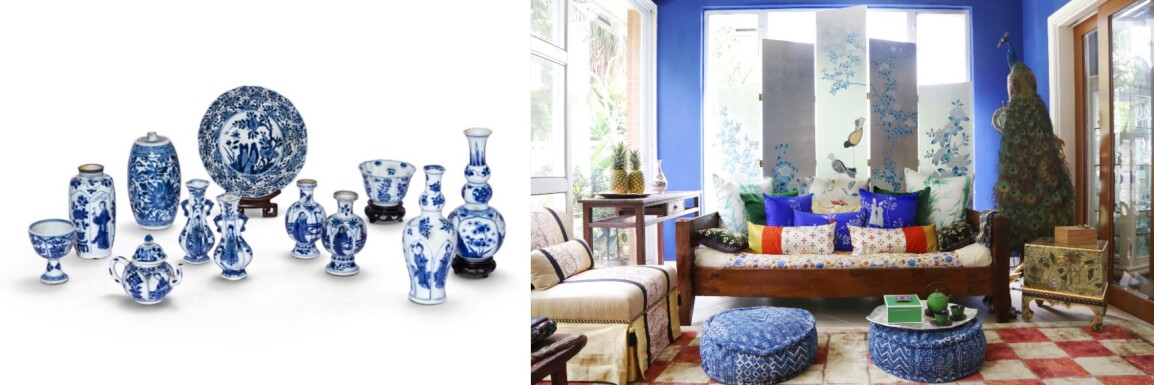W hat inspires Laura Cheung? Sotheby’s Hong Kong chats with the founder and designer of LALA CURIO, one of Asia’s most exciting interior design and lifestyle brands, as she reveals how to strike that perfect balance between antique and contemporary home decor. In advance of Sotheby's Arts d'Asie (11 December, Paris) auction, we asked her to mix and match some of the works from the sale with her own designs.
Cheung is part of three generations of expertise in decorative arts; her maternal grandmother specialized in cloisonné and paternal grandfather in rosewood furniture. Steeped in tradition throughout her life, Cheung felt the continuous draw of Asian art and, with her training as an interior designer, set to reimagine these traditional arts.
“We came about LALA CURIO with a mission in preserving lost crafts,” said Cheung. Indeed, the overall aesthetic is a fresh interpretation of 18th-century Chinoiserie, with its elements updated with a modern flair — in equal parts luxurious, refined and eccentric. LALA CURIO offers hand-painted wallpaper inspired by East Asian art, furniture embellished with cloisonné or lacquer, and home decor accented with enameling and colored stones.
“I am drawn to Chinese antiquity, but also my passion is to revive these lost crafts and turn them into something relevant for contemporary use.”
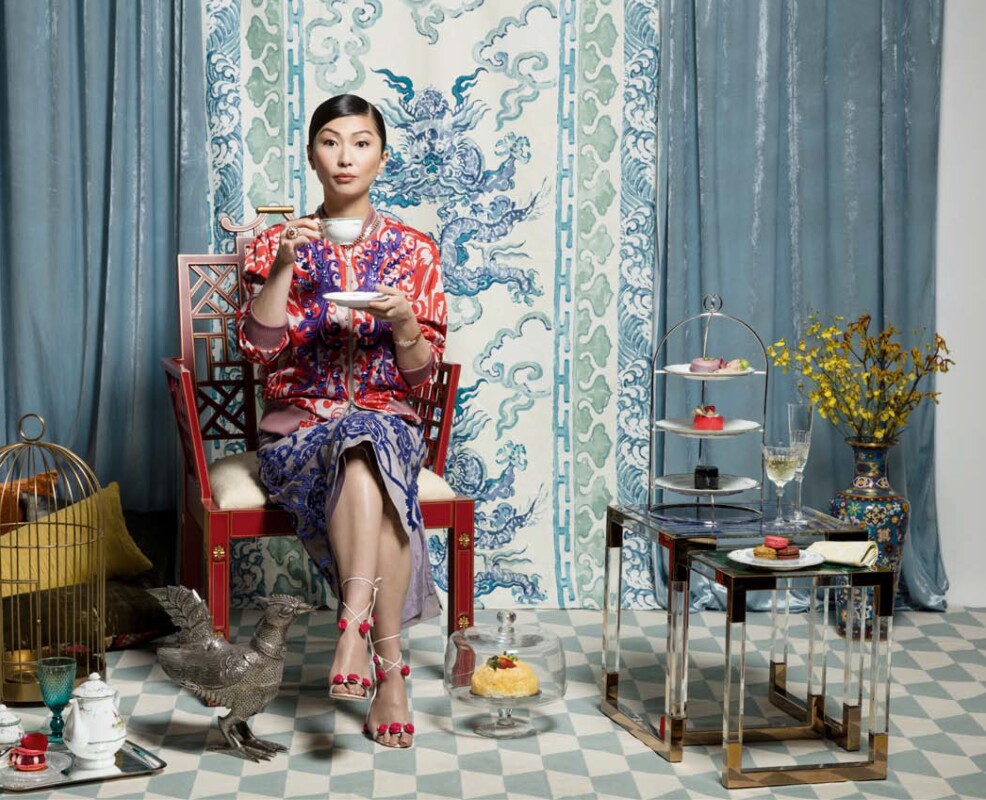
What is your design approach in making a style that had been popular centuries ago newly relevant for the modern home or interiors?
Back in the day, crafts produced in China were exported to the West. Within 17th- and 18th-century chinoiserie there was a fantasy of the Orient, an imagining of what the Oriental world was like. I love that fantastical aspect of creation.
We’re translating 17th-century chinoiserie primarily in our hand-painted wallpaper, one of our key products. Using this craft, through colors and subject matter, we narrate stories that are more relevant to our clients today. For example, to a chinoiserie scenery of birds and trees we added something bespoke for our clients, even adding their favorite modern-day objects — such as favorite handbags, shoes or whatnot; there is a whimsicality to how these are placed.
The designs do not only look to the past, they often focus on issues of the future or wink at today’s technology.
In a more recent collection, we are very much concerned about sustainability; the design is a series of underwater jewels depicting seaweed and sea life through intricate embellishments of pearls and beading, understanding that sea trees and kelp trees are important for saving our oceans, as they absorb carbon. We use the canvas of our hand-painted wallpaper to express many messages – whether it is a new take on history using contemporary colors to make it more fun, or portraying a modern subject and making it antique through old techniques. We have a whole series on the world of the imperial court where empresses are holding cell phones and taking selfies, putting on headphones and running, or having some macarons. There is also a bit of humor in the work.
What traditional materials or techniques do you use?
In terms of materials, our approach is using old techniques turned into a modern outlook. A good example would be cloisonné, a technique that was introduced in China around the 13th century and was even older from Persia and the Near East. In China, cloisonné became popular and had been considered one of the imperial crafts. Later it became a souvenir-like object and then became unfashionable. We’re so passionate about this craft we wanted to find any way to make it understandable for people in the 21st century. We use the same craft and turn them into flat panels. We do massive installations and walls, inlay in furniture so – let’s say it’s a design for a hotel we are working with – the craft is very old cloisonné but the look of it is very abstract contemporary art.
Chinoiserie at one point fell out of fashion and was associated as part of an ornate, outdated style. What do you say to those who hold this view?
Let’s think about why these objects became unfashionable or no longer so esteemed. Part of the reason was mass production. Personally, I am not a huge fan of mass production, which is not only bad for the environment, but it also demeans the creation of something special and unique.
To educate our clients on how to appreciate the craft, it is so important to show the provenance, to show the history of the technique, and to tell its story. Back in the day, only the imperial courts could use cloisonné because it was a highly prestigious, esteemed craft. Without having this background knowledge, you may look at a beautiful cloisonné vase and associate it with the mass production souvenir, not knowing that it was the beauty and success of cloisonné that resulted in the glut that caused the craft to become undervalued. We can share knowledge of how the craft is made: the hours of work required, the many times you need to fire cloisonné, the many wires you need to bend into shape filled in with enamel layer by layer, and all the layers of stories which make the object that much more precious.
"The beauty of the object itself should tell its own story. There is more to taste and preference than knowledge of the craft, and if the object is beautiful, then it shouldn’t take too much convincing."
LALA CURIO has clients in many countries. Do the collections vary — for example, color palettes — based on general preferences in different parts of the world?
We have a show in Paris every year, and very often our Parisian clients would tell us it should be more tone on tone, and they like things very subtle. We do have more muted collections, mindful of something subtler, but we are still very much true to what we are.
I love color so much and I cannot help it. Without color, it can become very boring. I feel like we’re the kind of brand that inspires two responses – you either love us or don’t care for us. In any successful brand, it is best to have people really believe in what you do, so that you are an artist and drive what you create, more so than trying to please everyone.
The Middle East is now also a big market for us, and in the U.S., we just opened a showroom in Los Angeles, though it has been very disruptive with COVID and the elections this year.
How would you advise those who are for the first time trying to incorporate an Asian-inspired style into their interior design?
For me personally, I love the idea of layering. It is like painting on canvas except I am painting in a three-dimensional world. Curate the whole space by layering on accessories with wallpaper as a backdrop and bringing it to life with furnishings and accessories. I am not a big fan of being “matchy-matchy.”
"Within the space there's a way to create a beautiful ensemble that mixes different periods and different items from around the world. The true tastemaker or collector has the gift to put it all together to make it cohesive in an unexpected way."
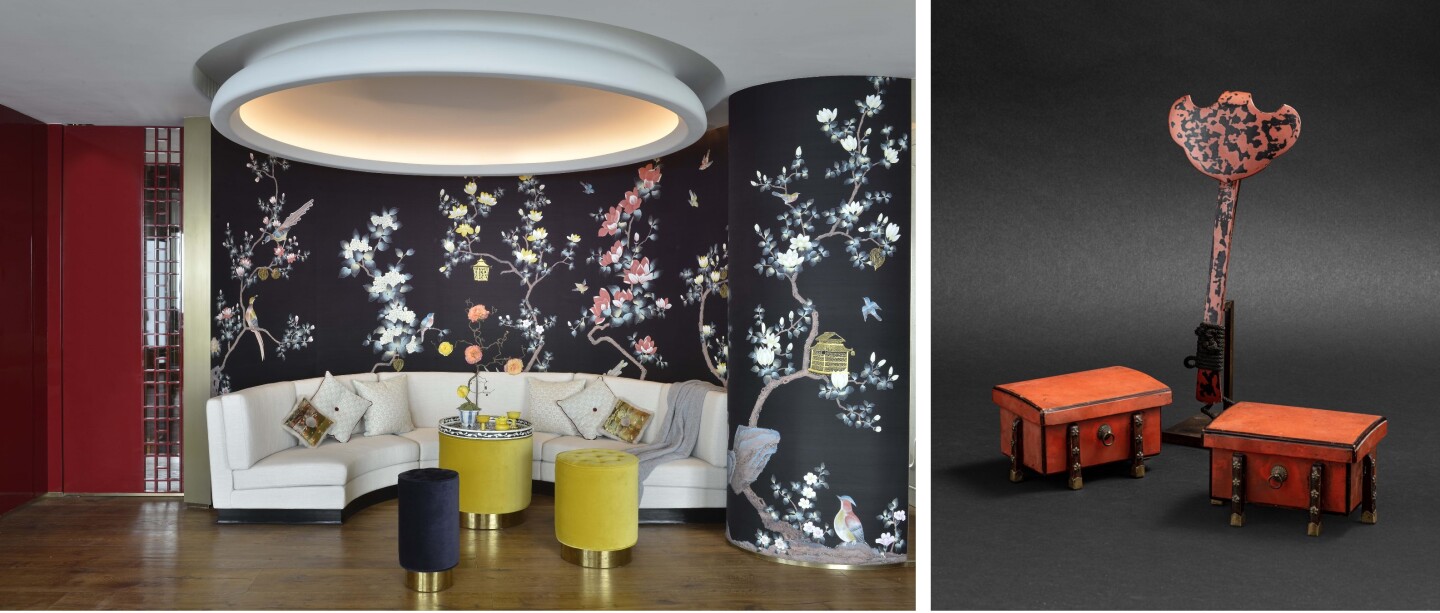
Chinoiserie from the 17th- and 18th centuries was a perfect match for rococo style. Is there a specific style or period that goes best with the chinoiserie of the 21st century?
Absolutely no one style. A lot of the clients that I work with are collectors, so rather than have me propose every single object, they would have a sculpture or an existing piece of furniture that would I work around. The beauty is to have the eye to curate and put it all together with a cohesive end result.
Has chinoiserie become fashionable again?
Wallpaper is definitely back. For a long time wallpaper was thought of as something from a grandmother’s home and then for the past few years, you see it is fashionable to have it again. The 17th- and 18th-century chinoiserie hand-painted wallpaper is something that the wealthiest of the wealthiest within our parents' and grandparents' generation enjoyed. These days I have a lot of younger clients, ordering hand-painted wallpaper; people are more and more appreciating luxury at home as well as handmade bespoke items. There is nothing more special than having a piece with a special provenance and history for the home.
